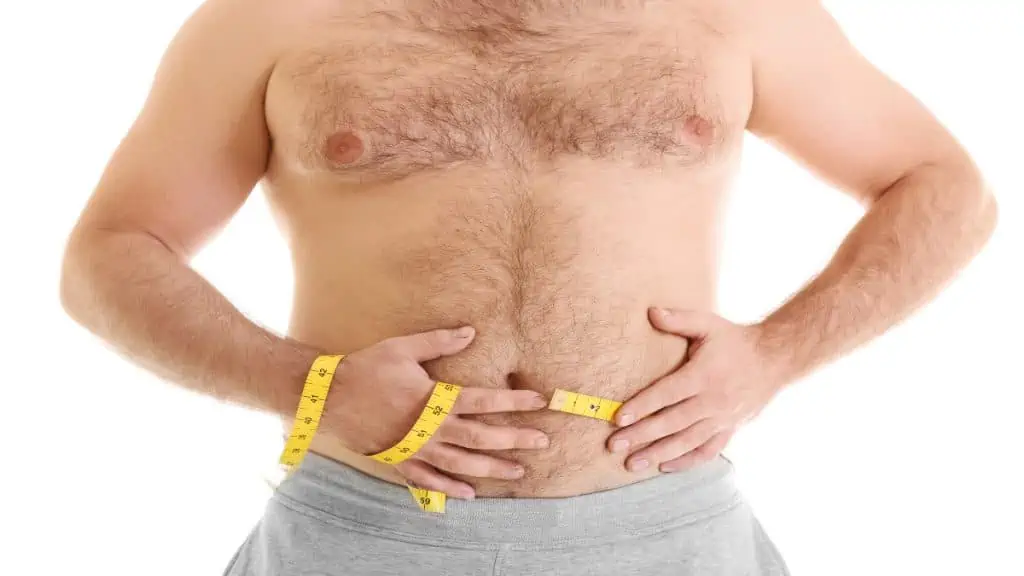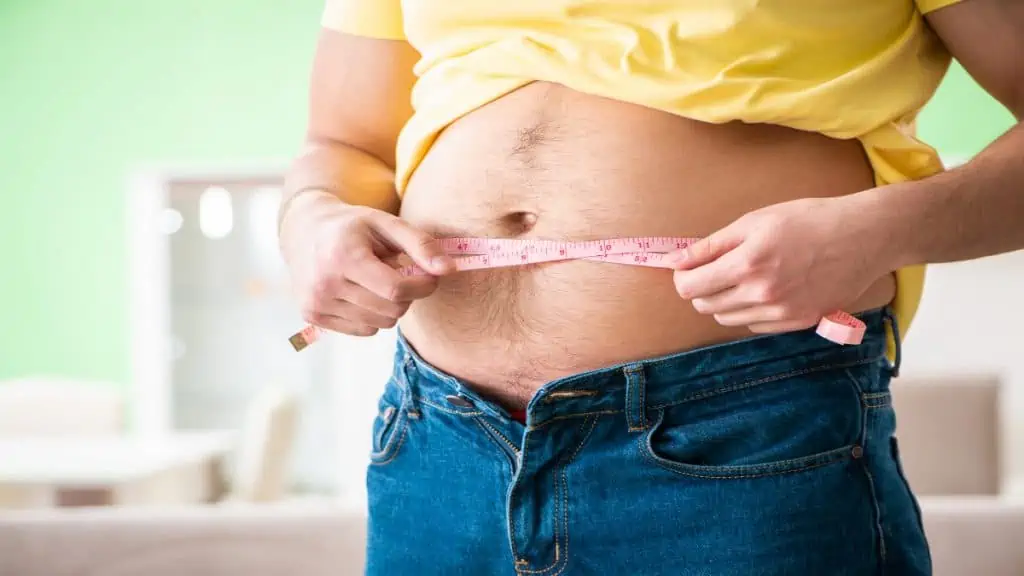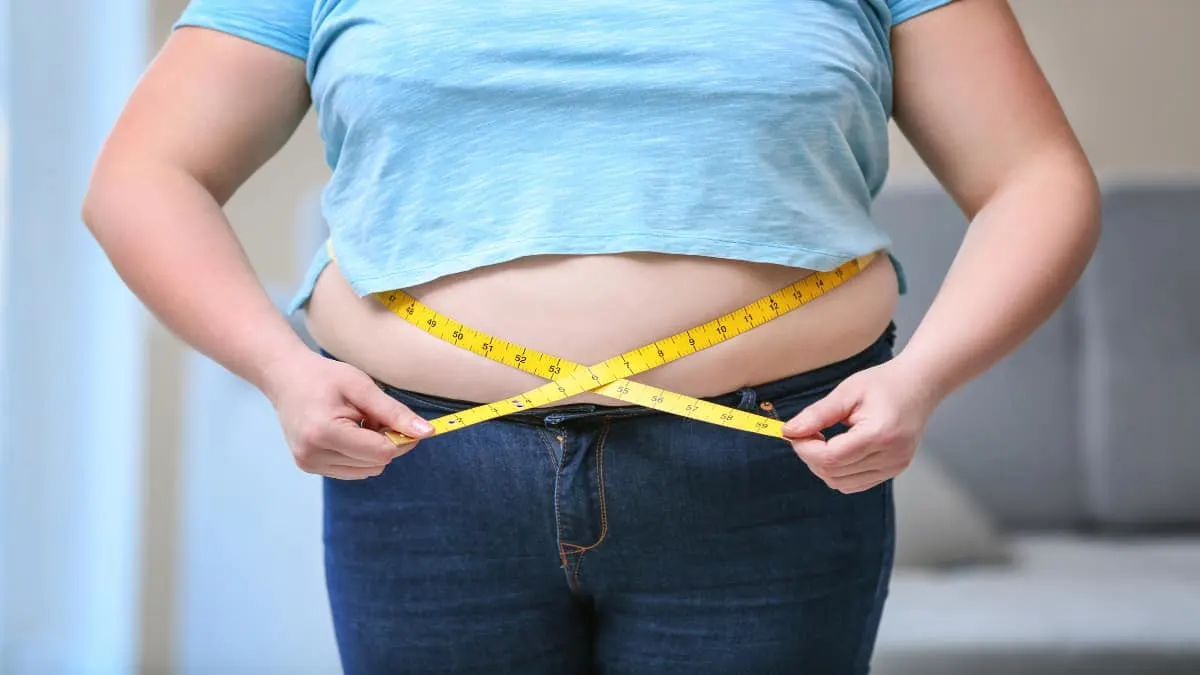Is a 36 inch waist a healthy waist size for women? How about for men?
Health, it is often said, isn’t measured by numbers on the scale or inches on the tape. Yet, circumference measurements, such as your waist size, have long proved useful for assessing your current and predicting your future health status.
With that in mind, this article draws on both anthropometric and health science data to explain why having a 36 inch waist may or may not be problematic for men and women.
- 30 inch waist
- 31 inch waist
- 32 inch waist
- 33 inch waist
- 34 inch waist
- 35 inch waist
- 37 inch waist
- 38 inch waist
- 39 inch waist
How big is a 36 inch waist for a woman?

How big is a 36 inch waist for a woman? According to US anthropometric data, a 36 inch waist is actually smaller than average for a woman.
However, other research recommends that females keep their waist below 35 inches, which would mean that a 35 in waist is slightly too big for a woman. [1]
Other health practitioners recommend that a woman keep her waist size below 31.5 inches, in which case a 36″ waist would be quite a bit larger than what is considered to be healthy.
Although you can still look and feel great while having a 36 in waist, having such a waist measurement as a woman may well mean that your BMI is classified as overweight or obese.
According to MedlinePlus, which is part of the National Institutes of Health (NIH), being obese comes with many potential (and very serious) health consequences, such as an increased risk of developing diabetes, high blood pressure, bone and joint problems, and certain types of cancers. [2]
You should talk to your doctor so that they can gauge your current health status and give you individual guidance.
Is a 36 inch waist big for a man?

Is a 36 inch waist big for a man? Based on the data, a 36 inch waist is slightly smaller than average for an American man.
However, many males would consider a 36 inch stomach to be a medium waist size rather than a small measurement.
Research from The BMJ, which examined 904 men, recommends that males should keep their waist below 37 inches. [3] So if you have a 36″ inch waist as a man, then you definitely shouldn’t gain any more weight and would likely benefit from losing some abdominal fat.
As you’ll learn in just a moment, however, not all waists—even if they’re the same size—are built equally. Your body composition plays a major role in your overall health status and whether or not your waistline is too big.
What does a 36 inch waist look like?

What does a 36 inch waist look like? A 36 inch waist looks normal and is likely to contain quite a lot of body fat.
While a 36 in waist almost certainly won’t look slim unless you’re exceptionally tall, it might not look outright fat either if you have a favorable body composition.
In the same way that BMI isn’t all that useful for assessing the health status of athletes (who may be overweight and yet very lean and muscular), waist size as a health marker isn’t particularly applicable to those with very well-developed abs and obliques.
When you train your core muscles, they become bigger and stronger, which ultimately makes your waist thicker.
Granted, anyone who isn’t exceptionally tall is unlikely to have a 36 inch stomach that consists of purely abdominal muscle mass.
However, some taller weight lifters and bodybuilders are bound to have 36 inch waists that are a combination of muscle, bone, and fat mass.
So if they have less body fat than muscle mass, it doesn’t seem correct to classify them as too fat just because their waist is 36 inches in circumference.
Conclusion: Is it bad to have a 36 inch waistline?

Although having a 36 inch waist is likely a sign that you’re either overweight or obese, such a circumference measurement is only slightly too big and can easily be reduced through a sustainable combination of healthy eating and enjoyable exercise.
The great news is that you’re actually slimmer than average if you have a 36 in waist (and this is based on data from thousands of US subjects).
So, in summary, while the size of your stomach is certainly useful for assessing your health, it’s not the only marker that you need to look at. That’s why you’re always best off talking to your doctor so that they can check for other health risks.
References
- Ding, M., Markon, A., Wolpert, B., & Chavarro, J. E. (2020). Associations of body mass index and waist circumference with risk of Guillain-Barré syndrome in women and men: A prospective analysis of three cohort studies. PLOS ONE, 15(12), e0239099. https://doi.org/10.1371/journal.pone.0239099
- MedlinePlus. (2021). Health risks of obesity. Medlineplus.Gov. https://medlineplus.gov/ency/patientinstructions/000348.htm
- Lean, M. E. J., Han, T. S., & Morrison, C. E. (1995). Waist circumference as a measure for indicating need for weight management. BMJ, 311(6998), 158–161. https://doi.org/10.1136/bmj.311.6998.158

